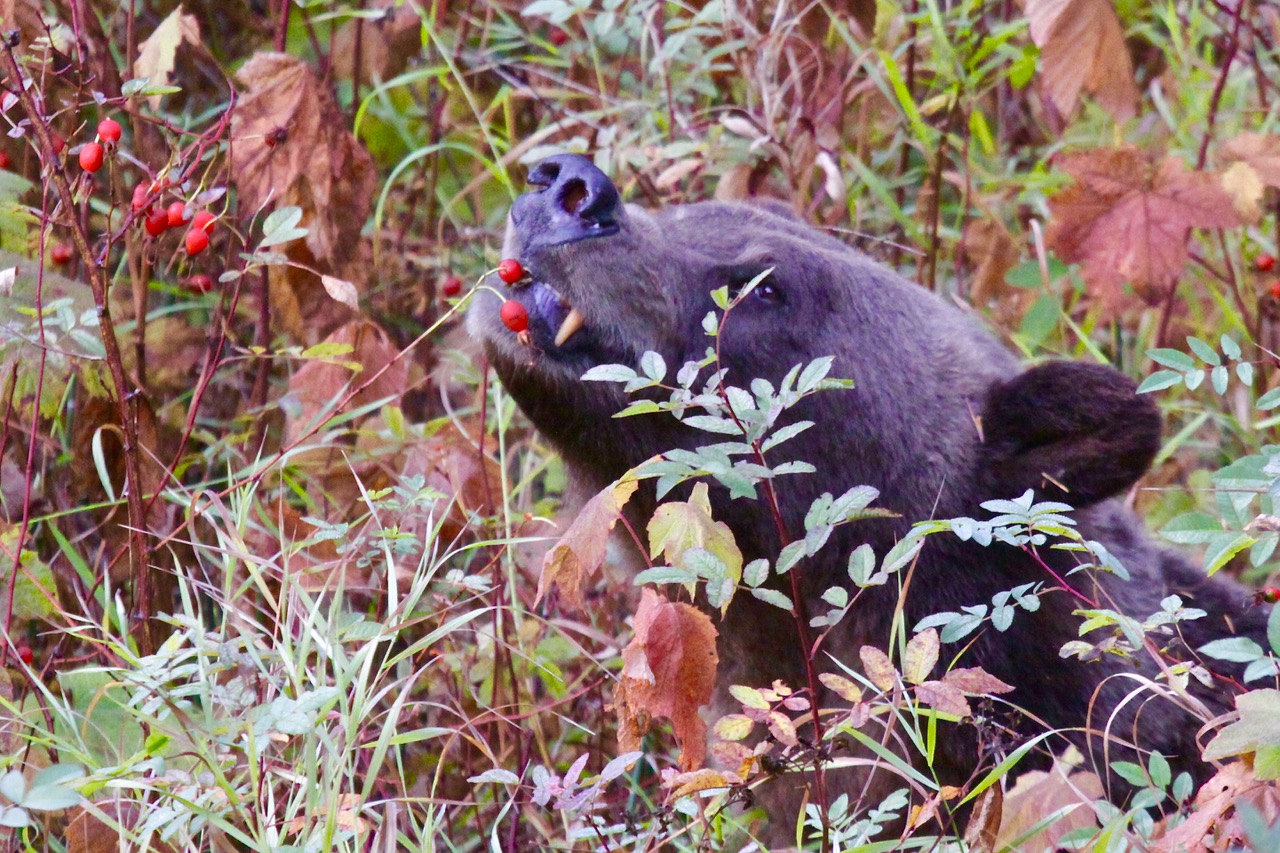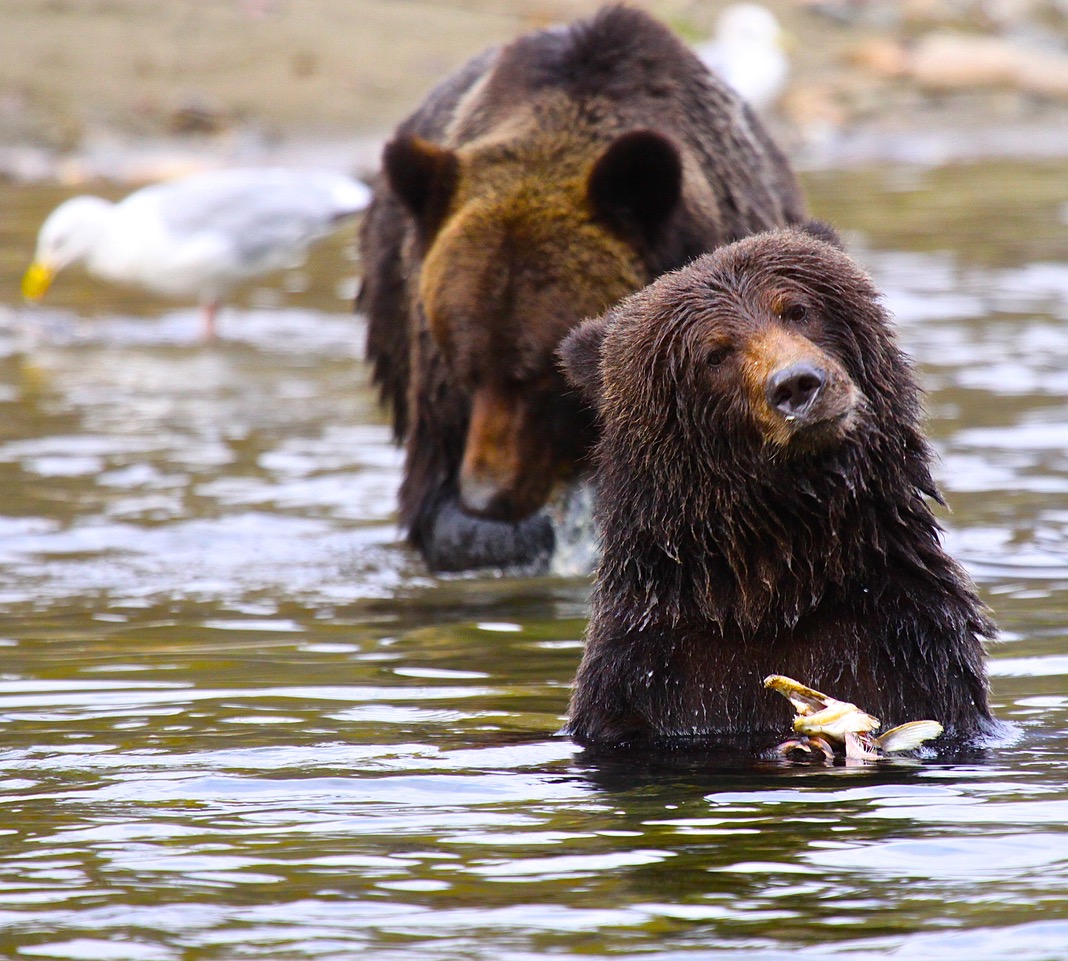
In Tlingit territory, the fight to protect herring is complicated
An excerpt from “We Survived The Night” by Julian Brave NoiseCat
Conservation officers have found two grizzly bear cubs dead at the Thorsen Creek landfill in the Bella Coola Valley in B.C.’s Great Bear Rainforest.
“You could see where the cubs were hit,” inspector Len Butler with B.C.’s Conservation Officer Service told The Narwhal
“Tracks and the blood on the road” also suggest the mother of the cubs was struck, Butler said, though conservation officers haven’t found her.
The two cubs are the first grizzly bears to die from human-related causes in the Bella Coola Valley this season, which Butler called a “busier than normal” year for conflict between people and grizzlies.
Officers received a report that the cubs were run over on the Thorsen Creek Bridge on the main highway on June 30. The Bella Coola Valley is narrow.
“Bears do frequent the bridge crossings,” Butler said.
It’s “maybe anywhere from two to five kilometres across the whole valley,” Nuxalk fisheries and wildlife field coordinator Jason Moody told The Narwhal.
Grizzlies make their dens higher in the mountains, but follow creeks down to the river, following “the different runs of salmon as they arrive in the different creeks.”
The river is also where you will find communities of people. And “all these houses are on salmon streams,” Moody noted.
Getting to those salmon runs, bears pass right through communities, where other things can look like food: garbage, fruit trees and smokehouses can be enticing for bears. Nuxalk research has also shown that fruit trees become more appealing to bears as salmon stocks decline. Since 2014, the Nuxalk Nation has used hair sampling to track grizzly bear populations and movement in the Bella Coola Valley.
“If there’s no salmon, any attractant is increased in value at that point. So cherries, apples, gardens,” Moody said. It’s something the Nuxalk didn’t see when “there was always a stable supply of salmon,” he added.
“You have these wild stocks that are suffering or disappearing completely in other watersheds all around us,” Moody said.
But in the Bella Coola area, human efforts are helping to bring back salmon. The Snootli Hatchery, located 11 kilometres from town, releases various salmon species, including chum, into the Bella Coola River and tributaries.

A grizzly bear eats berries. Photo: Jefferson Bray
“In the area right now we do have a lot of bears that are wandering around,” says inspector Butler. “It’s been a very interesting year. The bears did come out early and start getting into the fruit trees.”
“The scat that’s up and down the highways right now is just pure cherry pits,” Jefferson Bray, who runs a small chalet and offers nature tours in the Bella Coola Valley, told The Narwhal.
The deaths of the two grizzly bear cubs don’t come as a surprise to Bray, who has kept tabs on grizzly bear deaths since moving to the area 15 years ago.
“We knowingly bait them into conflict and we don’t really do anything about it,” Bray said, referring to the fruit trees he sees around the valley, many of which are not secured with electric fencing. “These little cubs are just the first.”
Moody has been helping with the Nuxalk Bear Safety Group since its start more than five years ago. Unlike other community bear programs, this one puts the safety of bears first.
“There’s a deep respect that we have for the bears, which stems from a lot of our creation stories,” he said.
“The private homeowners have to realize there are going to be bears walking up salmon-bearing creeks.”

Grizzlies follow salmon streams into the Bella Coola Valley. Photo: Jefferson Bray
From spring to fall, when grizzly bears are out of their dens and looking for food, the Nuxalk Bear Safety Group wants to help them make their way safely through the Bella Coola Valley.
“There’s increased anxiety as they go throughout the valley because they’re getting pushed from one property to the next,” Moody said.
In some cases, property owners take things into their own hands when grizzlies are on their properties, Moody said. A video of a man shooting at a mother grizzly bear with her cubs went viral in the fall of 2018. The issue of how people deal with bears on their property is not new and far from over.
There are efforts to encourage individuals to secure anything that a bear might consider food. The Nuxalk Bear Safety Group helps people with electric fencing kits to use around fruit trees and smokehouses. They also install cameras and monitor bear behaviour to see if fencing is working. Other services include pruning and removing trees and picking up things like composting fish guts from someone’s property if the person doesn’t have access to a vehicle.
Still, not all properties in the valley have been bear-proofed. Bray says part of the issue is attractant laws aren’t tough enough. In many cases, it’s up to landowners to decide whether or not they will do things like put electric fencing around fruit trees.
“The provincial laws are meaningless as they’re written and it makes for impotent, useless enforcement and it is a liability,” Bray said.
The Wildlife Act indicates that property owners are required to make sure attractants are secure, with exceptions for various activities including farm operations, leaving it up to many individuals to decide whether or not to keep attractants out of the reach of bears and other wild animals, Bray said.
While these laws are province-wide, Bray said there’s an opportunity for the Central Coast Regional District to “create a bylaw that circumvents … the exemptions made in the Wildlife Act and the Farm Act.”
“They could basically make a bylaw stating that people must contain their attractants for the safety of all in our community,” he said.
Without that, there are limits to what conservation officers can enforce, though they do encourage landowners to use electric fencing and other means to secure attractants like fruit trees, Butler said.
For Moody and the Nuxalk Nation, the big picture is keeping grizzly bears safe in the long run. The genetic population counts the nation is undertaking are showing preliminary numbers that are far less than provincial population estimates of grizzly bears, Moody said.
When it comes to grizzly bears, “Bella Coola is known as a black hole,” he said. “That’s the image we’re trying to change.”
The Bella Coola Valley used to be a destination for those seeking to make a grizzly bear trophy kill. Since British Columbia’s trophy hunt ended in 2017, Moody has noticed a fresh approach from the province.
“They have a lot more time to actually do work on the ground and with the bears directly,” said Moody.
Currently, the Nuxalk Nation is doing collaborative research with the British Columbia government to look at the sustainability of bear-viewing related activities.
Still, Moody said, there are different attitudes in the valley when it comes to grizzlies that are counter to the approach of the Nuxalk.
“We want we want people to live here … sustainably with the wildlife,” Moody said, “rather than … trying to keep this oasis of their property separate from all the rest of the Great Bear forest.”
Six hundred samples. Roughly 180 sites across the Canadian Arctic. And more than 3,000 microbes providing more than four trillion pieces of data on the...
Continue reading
An excerpt from “We Survived The Night” by Julian Brave NoiseCat

Data shows an oil company owed 10 times the government’s limit on unpaid taxes when...

Neighbours cried foul when a developer built a trail through a marsh near Orillia, but...
